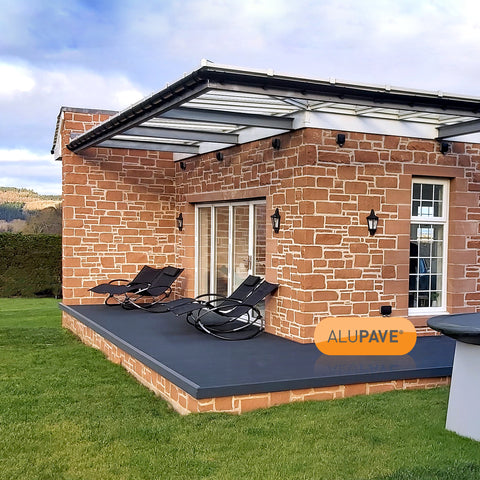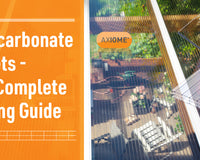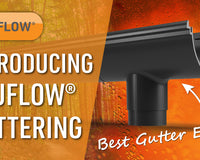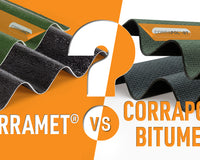When it comes to choosing a decking product you might be inclined to choose the lowest cost decking material, however its good compare all decking types before you make the decision so you can get the best solution, to suit the type of decking project you are working on. Most people are surprised to learn that the higher quality decking systems work out the lowest cost when you take the overall Decking Project Cost and Estimated Decking Lifespan.
Let’s start by asking, What Can Decking be Used For? There are a wide range of applications for decking including:
- Small DIY Decking Home Projects
- Large Commercial Decking projects
- Flat Roof Roofing & Decking Projects
- High Rise Decking
- Class-A Decking
- Balcony Decking
- Decking for BBQ Shelters
- Decking for Swimming Pool Areas
- Commercial Walkway Decking
- Wheelchair Access Ramp Decking
- Trolley Slop Decking, Caravan Decking …and more.
So, with this in mind we go though the benefits of each decking board type you can buy and help compare Timber Decking to Composite Decking and Aluminium Decking.
By answering these frequently asked decking questions in the following article, our Team have created a powerful shortlist, which really helps to understand some key facts about decking which are often overlooked and should be understood for the best decking results.
Advantages of Aluminium Decking – 12 Questions Answered
Here are 12 Questions that commonly get asked regarding Aluminium Decking. We have answered each one in detail below:- What Decking lasts the longest?
- How do I stop Decking warping?
- Why Does Composite Decking Fade?
- How do I stop Decking Joists Rotting?
- What is the longest lasting Anti-slip Decking?
- What Type of Aluminium Decking has an Anti-Wear Surface?
- How to build Aluminium Decking without Creaking Noises
- Does Aluminium Decking Get Hot?
- Is Aluminium Decking Noisy?
- How do I Stop Water Going Between Decking Boards?
- How can I Harvest Rainwater from Decking Areas?
- What is the Best Fireproof Decking for BBQ areas and High-Rise Balconies?
-
What Decking lasts the longest?
Even if your project is not a high-end prestigious decking project, it is still important to know that your decking projects will last, especially after all your hard work and cost creating the Decking Joists or Decking Subframe. Below is a Decking Estimated Lifespan Table showing how long different types of decking will typically last, so you can see what decking lasts longest and also the relative costs over time. Understanding how much decking costs for the different types is very helpful to making the correct decision on what Decking Type you should buy.
How Long Does Decking Last? This chart below shows how long different Decking Types typically last:
Compare Different Types of Decking Lifespans & Costs (UK): |
|||||
|
Type of Decking |
Relative Decking Costs* (UK)/ £100 spent on a Project |
Estimated Decking Life Expectancy |
Required Decking Maintenance Type |
Typical Decking Failures |
Relative Estimated Decking Cost Per year of Investment |
|
Timber Decking |
£100.00 |
5 Years |
High Maintenance: Painting & Sealing Annually |
Rot, Damp, Mould, Insects, Warping, Fading |
£20.00 per £100 Invested Per Year of Estimated Life Expectancy |
|
Composite Decking |
£135.00 |
10 Years |
Low Maintenance: Just Wash and keep Clean |
Warping, Fading |
£13.50 per £100 Invested Per Year of Estimated Life Expectancy |
|
Aluminium Decking |
£205.00 |
40 Years |
Low Maintenance: Just Wash and keep Clean |
None: No known failures. |
£5.13 per £100 Invested Per Year of Estimated Life Expectancy |
Be Aware: *Relative Costs are not actual costs, so these Relative decking Costs indicate an example of comparative costs if you spend £100.00 on Timber Decking, then the relative Cost for Composite Decking would be £135.00. Please note the real cost of the Decking investment is the relative Decking Cost divided by the Decking Estimated Life Expectancy. You can see that Aluminium Decking is the lowest Cost Decking over the life of the Project and will last the longest.
Extra Tip: Interestingly these costs do not take in to consideration the costs of the Decking Subframe, so you should also bear in mind that generally the longer the Decking Boards lasts the longer the Decking Joists will last, especially if it is a Fully Sealed Decking System which protects the Subframe from getting wet and rotting.
-
How do I stop Decking warping?
Timber Decking and Plastic Composite Decking have one thing in common, which is that they can both have issues with warping. Timber Decking tends to warp (twist, curve or bend) due to the fact that the Timber decking naturally absorbs water and then dries out again in hotter and dryer weather, causing a natural stress in the Timber which can make it warp. Composite Decking can also warps due to the relatively higher expansion and contraction rates of plastic composite materials which in turn cause it to deform its shape over time. Generally, these are aesthetical issues, but let’s face it, after all that investment you will want your Decking Projects to look in great shape for many years to come. For Decking that doesn’t warp like Timber of Composite Decking you should choose an Aluminium Decking product as Aluminium decking does not absorb water and does not expand and contract nearly as much as Composite Decking meaning Aluminium Decking stays looking great for much longer.
-
Why Does Composite Decking Fade?
When you create any coloured plastic material it is very hard to make it so that the colour doesn’t fade with UV light over time. Initially the effects of weathering and UV light does not affect Composite Decking however many of the Composite Decking options fade within their lifespan, which makes the property and area look very tired and old. For a solution for Decking that doesn’t fade like Composite Decking, you should consider Aluminium decking which has a much longer-lasting powder-coated finish.
-
How do I stop Decking Joists Rotting?
In almost all Decking products you will find they are designed to have a 5 - 6mm gap between the decking Planks, which allows water to drip off and drip in between, and unfortunately this water will be absorbed by the Timber Joists below causing mould and rot to set in quickly. So, you might be asking how long does a deck frame last? This decking gap between boards, can make the frame and joists become structurally dangerous over time and very expensive to replace. In some cases, Timber joists have rotted long before the Timber Decking has finished its lifespan.

If you don’t want to spend money on metal joists or framing underneath, which will make creaking noises when you walk on it, and are expensive to buy and install, how can you protect those structural Timber Joists? One idea is to cover them with polythene; however, this is a short to medium term fix for a long-term issue. The other option is to choose Decking which is Completely Sealed, giving a total Waterproof Decking System. Choosing a fully Sealed Decking System, means you can use lower cost Timber joists which are fast to install, whilst ensuring they are kept completely dry and preserved for the life of the Decking Area investment you are making.
Bonus Tip: If you are building a Balcony or First Floor Decking Project, then for all your Balcony Decking needs, you should use a Fully Sealed Decking system as this will prevent rainwater dripping down on to the lower level, and also prevent any small objects falling through the gaps between traditional decking boards.
-
What is the longest lasting Anti-slip Decking Surface?
Many Decking Boards have an Anti-Slip option nowadays to prevent the Decking from becoming dangerous in wet and cold weather. Many of these Anti-Slip Decking options are made from a grit formulation which tends to wear off and become ineffective as well as looking faded and worn out aesthetically. There are some Aluminium Decking Products which are manufactured with a Long-Lasting Anti Slip design in the actual Decking product which means it won’t wear off and become slippery like the grit formulations do. The best Aluminium Decking is a Twin-Prong Anti-Wear Surface Aluminium Decking which protects against slipping, but also protects and reduces any possibility of wear on the powder-coated surface, keeping the Aluminium Decking looking great for many years.
-
What Type of Aluminium Decking has an Anti-Wear Surface?
Aluminium Decking is the most robust Decking you can buy. Some surface finishes on Aluminium Decking can have a lot of foot traffic which tends to cause wear on the Aluminium Decking Surface. Choosing Aluminium Decking with a Patented Twin-Prong Anti-Wear Surface, protects against surface wear and makes it much more suited to high traffic areas including Decking for walkways, Decking for Balconies and Commercial Decking installations.
-
How do I build Aluminium Decking without Creaking Noises?
Aluminium is definitely the most Durable Decking you can buy, however when two aluminium components connect, you can get a ‘creaky ladder’ effect where with the pressure of people walking over Aluminium Decking, causes the surfaces and connections creak up and down. The noise can also occur when Aluminium Decking expands and contracts slightly in varying temperatures. This ‘Creaking noise’ can make the high-quality Aluminium decking, actually sound poor quality, which is why it’s so important to choose an Anti-Creak Cushioned Aluminium Decking System which also has inbuilt Expansion & Contraction protection.
-
Does Aluminium Decking Get Hot?
You would be forgiven for thinking that any type of metal Decking would get hot, however there are two key things to consider when comparing the heat gain on Decking. Heat gain from sunlight is important, as this can not only damage the Decking, but also cause the decking to become uncomfortable to walk on with bare feet or become too hot for Pets. To make best choice you use these two fundamental Quick Checks for choosing the Best Decking:
Decking Quick Check 1: Is the Decking a solid or Structured Design? The overall thickness of the Decking Board will be most likely 20 – 25mm. If this overall thickness is solid material, then heat gain will tend to be much higher than a structured or hollow Decking Board. Choosing a well-structured Decking Board will not only improve strength ratios, but also help disperse heat quicker meaning it is more likely to keep cool.
Decking Quick Check 2: Is the Decking Plastic, Composite or Aluminium? You may be surprised to know that almost without exception Aluminium Decking will always stay cooler than any Plastic or Composite Decking Boards. Aluminium has incredible thermal conductivity properties, so that heat is quickly dissipated from the Aluminium decking Boards. Whilst some other metals and Plastic Decking Boards get very hot in sunlight Aluminium Decking Systems will tend to stay much cooler and even in direct sunlight Aluminium Decking will generally maintain a temperature which is comfortable to walk on.
-
Is Aluminium Decking Noisy?
Whatever type of Decking you are considering the natural effect is that it will tend to be noisier than a traditional concrete slab patio area for example, after all that’s part of the look and feel of Decking. Whilst Aluminium Decking is the longest lasting and lowest cost-over-lifespan Decking, you may be wondering if Aluminium Decking is noisy? The answer depends on which Aluminium Decking you choose. Aluminium Decking is now manufactured with noise reducing cushioning features that make it as quiet as any other type of decking to walk on and even removes any creaking noise. When choosing Aluminium Decking it is important to choose a Noise-Cushioned Aluminium Decking System which doesn’t cost any more, but the noise cushioning is a patented inbuilt feature giving you the best lifespan and a quiet Aluminium Decking solution at the same time
-
How do I Stop Water Going Between Decking Boards?
There are two options to stop water going between decking Boards. The first option is to cover the underside of the Decking in some sort of polythene membrane or similar to catch the water that drips through, however the trouble with this solution is that the water will tend to then puddle or run in to areas across the polythene membrane and find its way to cause rot, or mould growth on the substructure. Also, if the Polythene gets punctured in any way the water will find a way to leak and drip its way through somewhere.
The second option is to choose a Decking System that has a concealed gutter and double seal water system, so that the Decking still looks like individual boards, but as the water drips down the gaps in between it is collected by a hidden Gutter underneath. The Hidden Decking Gutter is an integral part of the Aluminium Decking System so there is no added installation time, but the Aluminium Decking System Stops Water going between the decking Boards and dripping down on to the substructure or floors below. Choosing a Totally Waterproof Decking System can save a lot of money on substructure costs and ensures the longest lasting Decking lifespan.

-
How can I Harvest Rainwater from Decking Areas?
Rainwater on decking Areas is generally wasted as it is very hard to collect it like you would off solid, paved or roofed areas. There is however a totally waterproof Decking System now manufactured that will collect the water for you and channel the rainwater so you can re-use the water for gardening or other re-purpose uses.
Decking Rainwater Harvesting is a great way to collect large amounts of rainwater and store it for times when there may be water shortages and to conserve water usage. Rain Harvesting Decking is not any more expensive than standard Aluminium Decking as the Concealed Decking Gutter and Decking Drainage system are manufactured as a patented integral part of the Decking Boards. You can also get a Side Gutter for Aluminium Decking which Directs the Rainwater in to one place.
-
What is the Best Fireproof Decking ?
When planning to make a Decking Structure, it is always important to consider the Fire Safety, particularly when the Decking is adjoining a house, outbuilding or commercial building, to ensure the safety of the occupants, and protection of the property! The other consideration is preventing damage from a heat source such as a Patio Brazier, or stray BBQ coal. We have set out the two main fire risks in a Decking Fire Risk Chart below, which compares Fire Hazards across the three main types of Decking. For the best Fire Safety, you should always choose Fireproof Decking unless there is no risk of a fire or heat source in the area.
Decking Fire Risk Comparison Chart |
|||
|
Decking Type: |
Timber Decking |
Composite Decking |
Aluminium Decking |
|
Fire Risk from Flame |
Very High |
High |
Very Low Risk – Virtually Fireproof |
|
Melting Risk from Hot Ember |
Medium – Will burn but not melt |
High – will melt |
No Risk – Will not melt |
Additional Information: What is High rise Balcony Decking? Since the Grenfell Fire legislation has been passed to ensure that any Decking which is to be installed for high rise buildings must comply with Fire Safety to prevent another tragic disaster. Choosing an Aluminium Decking Board, provides a Decking board which will not easily burn or cause fire to spread.
Additional Information: What is High rise Class A Decking? Class A Decking is a decking board which has been tested and deemed as non-combustible and therefore is safe and legal to use on high rise Decking applications. Aluminium decking will usually meet this standard due to the naturally excellent Fire-Resistant non-combustible properties which aluminium provides.
BONUS QUESTION:
What is the correct Spanning Between Decking Joists?
Understanding the correct strength of Joists for your Decking is essential for safety and longevity. If the Decking project is being installed at any significant height off the ground, then you should consult a structural engineer to get the design right. Generally, people will use 6x2, 8x2 or 10x2 Joists for Decking, depending on height and spans. However, large part of the decision regarding the distance between Decking Joists mainly depends on the type of Decking you choose. Many Decking Boards require a Joist as often as 400mm, however you can now get a High Span Aluminium Decking System that can span around 1100mm between joists, for most applications, so be sure to check the Spanning Chart for the Decking you are choosing.
Top Tip: The greater the distance between Decking Joists your Decking Board can achieve, the less cost you will have for the Decking Joists as you will need less of them, which reduces the whole cost of your substructure.
Would you like further Help on Aluminium Decking?
Our Teams are very happy to assist on our Live Chat or via email shop@clearamber.com where our super friendly Teams will provide you with all the advice and support you require for your projects.
Place Your Order Today – Get Same Day Despatch, Free Returns & Flexible Payment!
At Clear Amber Shop you can have total peace of mind with:
- Get SWIFT Guaranteed Same Day Despatch for rapid delivery
- Return items within the scope of our NQS Returns Policy
- Get Instant Credit choosing our Flexible Payment Options
- Register your products for Total Lifespan® Warranty
Our Teams are here to support help you with every step of your project… Talk soon!














